Here at Written Word Media, one of the most common questions we are asked by authors looking to run a promotion is: What price should my book be on the day of my promotion? Since we love data almost as much as we love books, we took a look into that for you all. Below you can find general results of our analysis, as well as some more genre specific takeaways towards the end of the article.
We looked at Amazon sales data from January, February, and March of 2017, and compared it to data from January, February, and March of 2016. Please note that this analysis is based purely on data we have collected from the promotions we ran to our audience. These pricing best practices are not necessarily true for all audiences or promotional sites. They are true for books on Amazon and reflect the behavior of Written Word Media readers on Amazon.
How To Price Your Book to Sell the Most Copies:
When you’re planning on running a price promotion, it’s important to pick a primary goal. If you’re looking to get your book into the hands of the greatest number of readers by selling the most copies, $0.99 is by far the best price point to achieve that goal. On average, you will sell over 2 times the number of books at $0.99 than you will at $1.99.
How To Price Your Book to Maximize Earnings
If your primary goal during a promotion is to maximize royalty revenue for you, the author or publisher, then you’ll be interested to hear that $3.99 has replaced $4.99 as the best performing price point for author earnings since we looked at this back in 2015.
If you are unfamiliar with the royalty structure on most major retailers, then you may be asking yourself: How is it that authors earn more money at $2.99-$4.99 than they do at $0.99-$1.99, when they sell fewer copies of their book? Most of the sales that we see come through Amazon, and on Amazon authors receive 70% of every sale they make when their book is priced between $2.99 and $9.99. However, they only receive 35% of the sale when their book is priced below $2.99. This means that you need to sell a LOT more copies at $0.99 or $1.99 than you do at a higher price point in order to make the same amount of money. Below are a few example tables that illustrate the point.
This is an EXAMPLE Table of sales, here we keep the number of copies the same
| Price of book | Royalty Rate on Amazon | Number of Copies Sold | Net Earnings to Author/publisher |
| 0.99 | 35% | 10 | $3.47 |
| 1.99 | 35% | 10 | $6.97 |
| 2.99 | 70% | 10 | $20.93 |
| 3.99 | 70% | 10 | $27.93 |
| 4.99 | 70% | 10 | $34.93 |
This is an EXAMPLE Table of sales, Note how the different number of copies sold results in very similar net sales numbers
| Price of book | Royalty Rate on Amazon | Number of Copies Sold | Net Earnings to Author/publisher |
| 0.99 | 35% | 50 | $17.33 |
| 1.99 | 35% | 25 | $17.41 |
| 2.99 | 70% | 8 | $16.74 |
| 3.99 | 70% | 6 | $16.76 |
| 4.99 | 70% | 5 | $17.47 |
It’s worth noting that our readers expect “deals”, so $4.99 could well be a good full price option for your title. However, when running a price promotion with deal sites like ours, we recommend avoiding a $4.99 price point.
It’s Harder to Optimize for Both
When we ran this analysis back in 2015, $1.99 was the clear winner for when authors wanted to sell many copies AND optimize their earnings. Back then, authors only sold a handful fewer copies at $1.99 than they did at $0.99, so even at the 35% royalty, author earnings were almost double what they were at $0.99. When we looked at the data from 2017, however, we see that titles priced at $1.99 sell half as many copies as titles priced at $0.99. This means that authors, on average, are actually earning less at $1.99 than they are at $0.99.
This means that it is more important than ever for authors to be clear about their goals for running a promotion and to align the promotional price point with the set goal.
Optimal Pricing for Revenue Depends on Genre
No matter what genre your book is, you’re always going to sell the most copies at $0.99. That data point never changes. However, if you’re looking to optimize for revenue, it’s a slightly different story depending on the genre.
Optimal Price Points to Increase Revenue: By Genre
| Genre | Price |
|---|---|
| Romance | $2.99 |
| Mystery | $1.99 or $3.99 |
| Non-Fiction | $3.99 |
| Fantasy | No Major difference between 2.99, 3.99, 4.99 |
| Science Fiction | $3.99 |
Year Over Year Change
These recommendations are all based on 2017 data. However, we know that many of you are constantly testing new strategies, so we wanted to show you how things have changed since 2016. In the graphs below, the red lines are average sales from Q1 2016, while the blue lines are average sales in Q1 2017 by price point.
In the Romance genre, we see the largest change in performance for higher price points. In Q1 2016, $3.99 was the optimal price point for maximizing revenue during a promotion. in Q1 2017 we see a significant drop in promotion performance for books priced at $3.99.
In Mystery, we see another significant change. In Q1 2016, $2.99 was the best price to optimize for revenue. However, in 2017 we see a shift toward $1.99 and $3.99 as optimal price points for maximizing revenue.
If you’ve found yourself thinking that pricing strategies that used to work for you now no longer seem to be as effective, these graphs support that notion. A lot has changed in the past year. With Amazon and other eBook retailers constantly changing their platforms, it is important to continue to test new strategies.
What Does it All Mean?
If you’ve made it this far (or just scrolled to the bottom) congratulations! Here is what we learned:
- If you are looking to sell a lot of books in order to build an audience, price your book at $0.99.
- If you are looking to make money off of a promotion (and your books are highly professional with good reviews) price your book at $3.99. But note that readers are less likely to take a chance on a book with no reviews or with a poor cover at the $3.99 price point.
- Readers have different pricing expectations for different genres. Find what works for your audience.
- The industry is changing rapidly and things that worked last year may not be working this year. So never stop testing.
What have your experiments with pricing shown you? Let us know in the comments below!
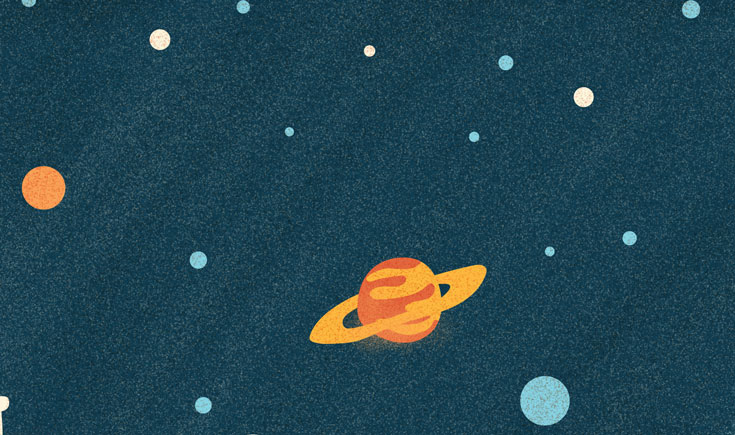
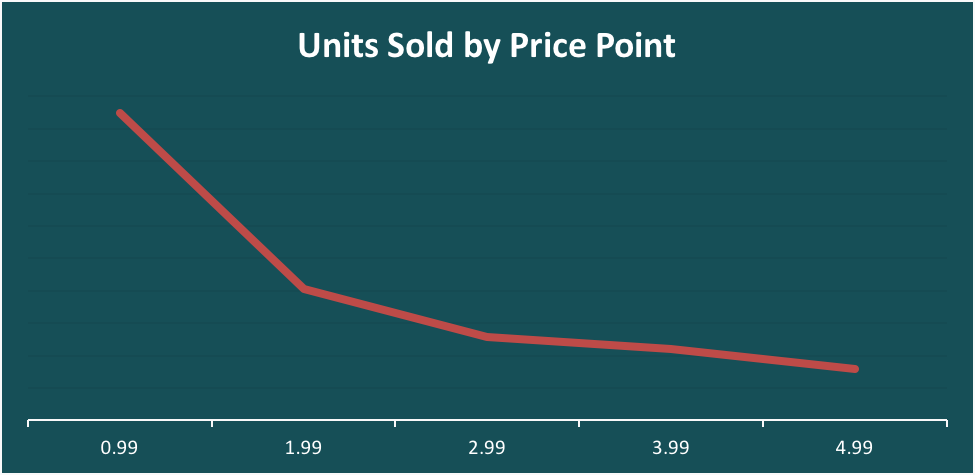
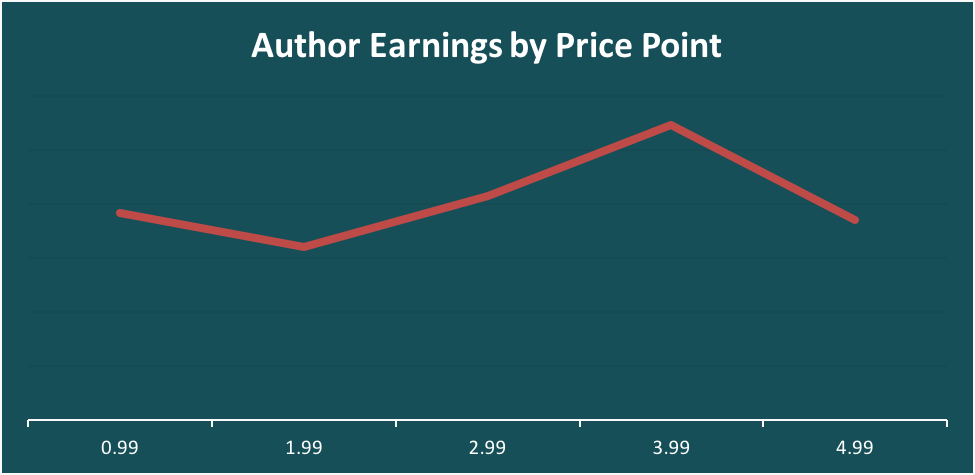
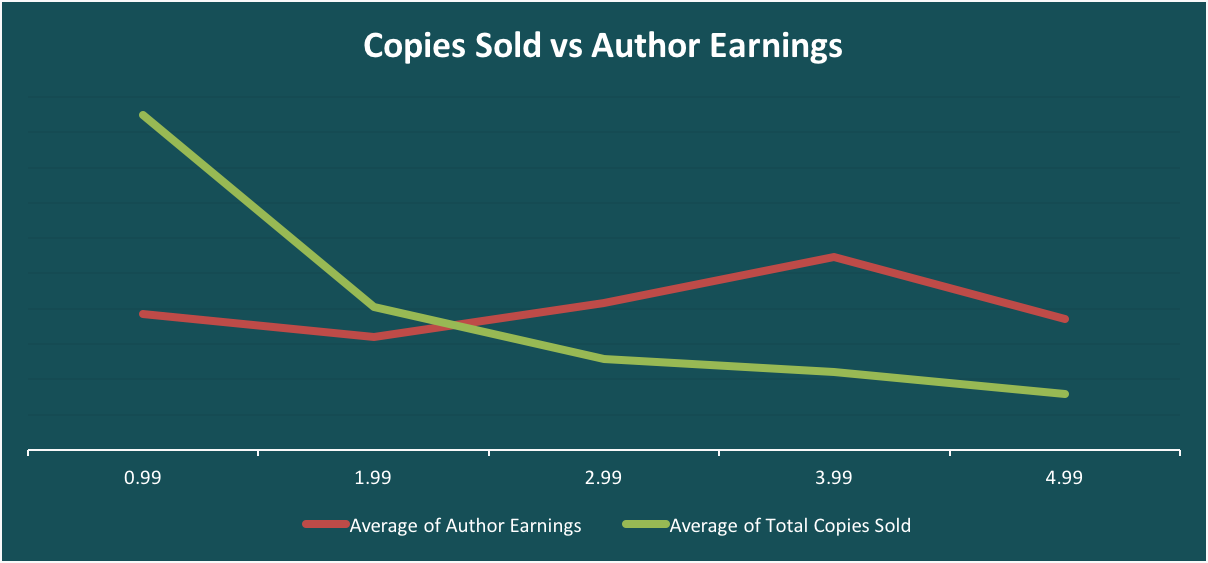
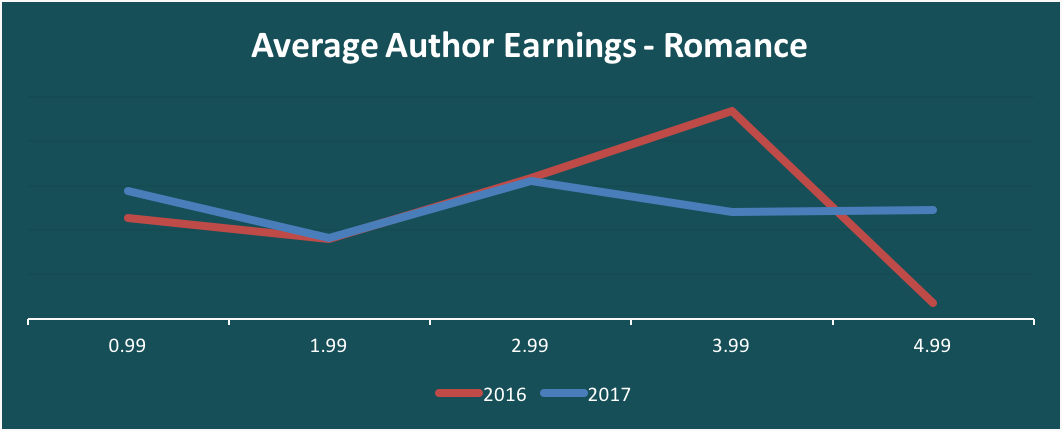
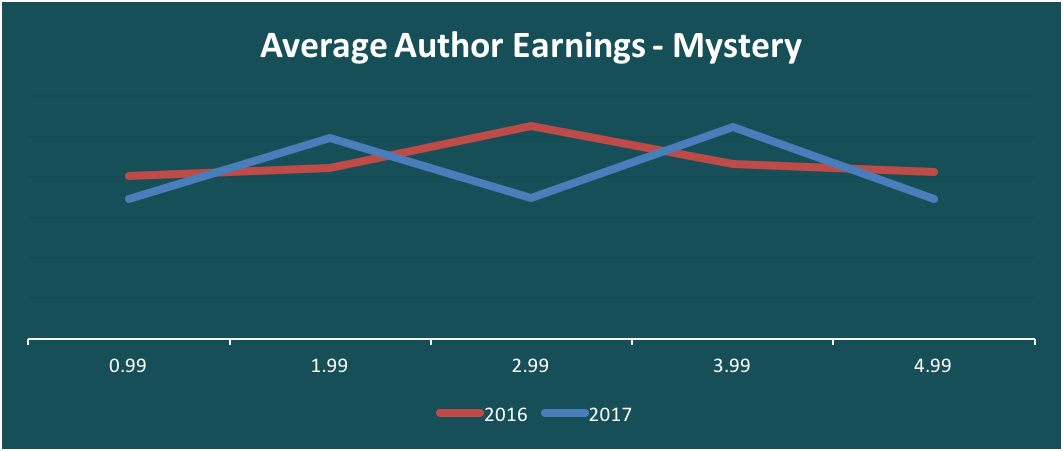
Great info!
This article has confirmed what I have found out myself just through watching the sales of my books. However, I didn’t realize that $1.99 would net me less than .99 in promotion. seems like .99 would be the best sales price for a pre-order.
Useful info with some interesting quirks. Thanks.
Your pricing article is interesting, but I have come to believe that there are two new 800 lb Gorillas in the room: 1) the explosion of Free Books, and 2) Kindle’s new shift away from Indie Books to Publisher Books. There are now a horde of new Free sites, like all the group promos on Insta-Freebie, and others. I’ve participated in 7 or 8 myself with a Perma-Free Book (all this ala the seminars and classes of Mark Dawson and others). I thought I would be building a reader list and crating a market for my other paid books. Unfortunately, all I did was give away a lot of books , with no bump in sales. What we’ve created is a large readership who sees no reason to pay anything for books. The second, equally ominous trend is the number of books on the Kindle best seller list published by traditional publishers. Kindle released a list a month or two ago of their top 25 sellers. Only one was an Indie, and virtually all the others were around $9.95, not the $399 or $4..99 you were discussing. Indies created Kindle, but clearly they have seen their own best interests now lie with working with and promoting the major traditional houses. Indies are left with giving away freebies. It is not a good trend.
Had the same observations a year or so ago. Well put.
CHhoe,
Thank you for the latest data on pricing, it is very helpful to see the upward trend. I was wondering, being a fairly new writer in the market: Is there any data on how book length effects pricing? If so what book lengths do readers prefer to buy for the types of books you mention in the article?
Once again, thank you very much.
Hi JB, We don’t have hard data about the effect that book length has on pricing. However, we promote predominantly full length novels on Bargain Booksy, so most of the titles that this analysis is based off were at least 150 Kindle pages, with most of them being over 200.
Thank you chloe
Great info .My 2 books are for 3.99 and during promotions period I choose the gradual system of .99 1.99 2.99 during a week time.Do you think that extending this promotion scheme to longer time-2 weeks of even a month would be beneficial?
THanx
Margaret Merrifield; have you done any analysis on children’s picture books. I wrote the first educational children’s book on HIV aids called come sit by me and have the rights back. I’m planning to Indie publish it along with a series on bullying, cancer etc. They will be professionally done. Learning a great deal regarding the whole process. Interesting comment regarding the reader list and the freebies versus the traditional publishing houses now using kindle etc. Do you have any experience with the best approach for pricing and promoting children’s books? There’s not seem to be a great deal of information about this. I look forward to your reply via email. Thank you for the work you do.
This post doesn’t even touch on the fact indie authors price our books by word count. It is a huge factor in price structure. No one will pay $3.99 for a 10k word short story, for example. Initially, I marketed the first book in my series as free, then 99c. It’s 45k words. Now the book is priced at $2.99 and selling more than it did at 99c. The 99c price point cheapens a book.
I price all of my books by word count. Up to 50k are $2.99, 50k to 70k $3.99/$4.99 depending on whether the book is standalone or part of a series.
Readers are swamped with free and 99c books that sit unread on their devices. It’s a horrible trend that devalues our work. I’ve decided to cut back on price drop promotions and will not offer freebies unless it’s for a group giveaway that will net me lots of new newsletter sign-ups. Now I’m focusing on selling my books at their full price and trying to master Amazon Marketing Service ads.
I just read another article that says pricing your book low tells potential readers that you don’t feel your work is worth more than 99¢ or $1.99. Personally, I’ve put hundreds of hours into each of my three books and tried the 99¢ thing with the first book for the month before Book 3 (It’s a series.) came out, and sold just ONE at that price. It’s back at the original price of $2.99 now. I’m the week since I changed it back, I’ve sold two. I keep getting 5-star reviews and people who but Book 2 or 3 invariably go back and buy Book 1. They want to know how the story began.
I believe I have a great story line, engaging characters, and beautiful covers. My work is worth more than just 99¢. But that’s just my opinion.